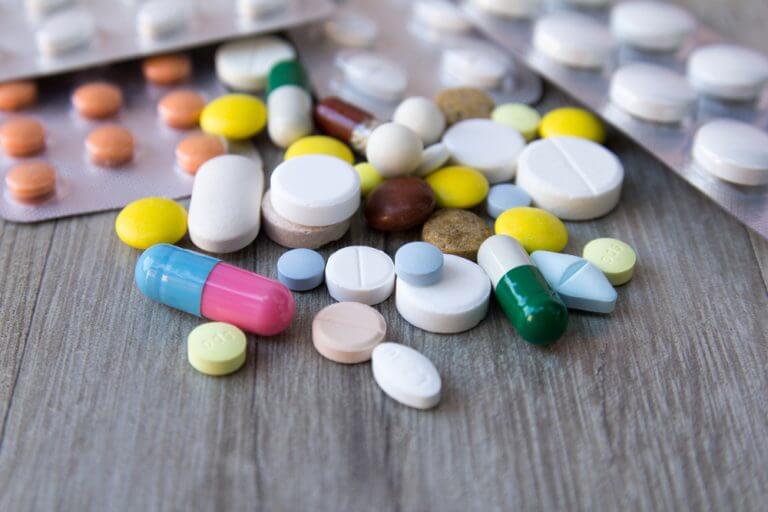Choosing the Best Inpatient Prescription Drug Rehab Center

 Prescription drug addiction can be a burden not only to the user, but also to his or her immediate family, friends, and the society in general. It damages one’s loving relationships and stripes one of honesty and self-respect. It’s hard for a prescription drug addict to envision a life, leave alone ever being happy without being “high” or “Stoned.”
Prescription drug addiction can be a burden not only to the user, but also to his or her immediate family, friends, and the society in general. It damages one’s loving relationships and stripes one of honesty and self-respect. It’s hard for a prescription drug addict to envision a life, leave alone ever being happy without being “high” or “Stoned.”
Prescription medications improve the quality of life for millions of people. Benzodiazepines, or benzos, help relieve anxiety symptoms, while stimulants like Ritalin and Adderall can allow those with attention-deficit/hyperactivity disorder (ADHD) to achieve their full potential. Opioid painkillers such as morphine, codeine, and fentanyl can help make even the most severe pain management. However, when these drugs are abused, they can be just as dangerous as their illicit counterparts, leaving a wide path of devastation across many areas of a person’s life. For many, breaking free from a prescription medication addiction requires the assistance and guidance of knowledgeable professionals who are well-versed in treating this type of substance abuse. In seeking out care at a professional prescription drug addiction rehab and treatment center, it is certainly possible to no longer be caught in the grips of such an addiction.
Most people take prescription medicines only for the reasons their doctors prescribe them, but an estimated 20 percent of Americans have abused prescription drugs for nonmedical reasons. Prescription drug abuse is a serious and growing problem in the United States thanks to a variety of risk factors. Thankfully, there are a number of treatment options for people who abuse prescription drugs. The key is finding the best type of rehab to effectively treat prescription drug abuse and addiction.
The best inpatient prescription drug rehab program will vary to some degree according to the specific prescription drug around which the addiction revolves. According to the National Institute on Drug Abuse (NIDA), prevention efforts need to focus on various motivators for the abuse. These motivators are often different according to age and gender. If you or someone you love is struggling with an addiction to prescription drugs, now is the time to seek help. The best rehabilitation programs for prescription drugs understand the things that motivate people to abuse prescription drugs and have programs in place to address these issues. Some programs are designed to promote healing of the mind and body as part of the recovery process.
"If you or someone you love is struggling with an addiction to prescription drugs, now is the time to seek help."
What Are Prescription Drugs?
The label of prescription drugs — interchangeable with prescription medication — refers to any form of pharmaceutical drugs that cannot be legally sold without a medical prescription issued by a licensed physician or doctor. Prescription drugs are different from over-the-counter drugs, as the latter can be obtained without a prescription. Since prescription drugs require a doctor’s signature to attain, they can be misused in a few different ways, including:
- Receiving them from a friend or family member who has a prescription
- Taking larger doses than the doctor recommends
- Refilling the prescription without a doctor’s order
Those are some of the most common ways that people misuse prescription drugs, which can then lead them to develop a prescription drug addiction. Some prescription medications are not misused as often as others are due to the associated effects of each drug. Psychoactive prescription drugs are classified into specific groups, each with their own appeal to someone seeking to misuse the drug or wanting treatment for pain or sickness.
Opioids
Opioid painkillers are prescription drugs which act on the opioid receptors in the body’s nervous system in order to reduce pain. Opioids are available in various forms: tablets, capsules, and liquids. Since opioids can be highly addictive, many of them require a prescription to take and are not included in over-the-counter offerings. Some of the most common opioid prescription drugs (with their most common brand names noted after) include:
- Oxycodone – Percocet, Percodan and OxyContin
- Diphenoxylate – Lomotil
- Hydrocodone – Lortab, Lorcet, Vicodin
- Morphine – Avinza, Kadian and MS Contin
- Fentanyl – Duragesic
- Codeine – Tylenol with Codeine, Vopac
- Hydromorphone – Dilaudid
- Propoxyphene – Darvon
- Methadone – Dolphine
- Meperidine – Demerol
When taken according to a doctor’s prescription, opioids are extremely effective pain-relief medications. They can improve the quality of life for people suffering from chronic pain, including after surgery and during cancer treatment. However, tolerance and a dependence on opioids develops quickly and addiction can form within two weeks a substance is taken regularly. If people increase their doses too much, people may experience severe side effects and be in danger of extreme injury, including death.
Stimulants
Stimulant prescription drugs work similar to cocaine. They increase energy and alertness, while some also elevate blood pressure or suppress appetite. Many people take stimulants to treat for attention deficit hyperactivity disorder, a condition with symptoms such as inattentiveness, feeling impulsive, and hyperactivity. Stimulant prescription drugs often are in pill form, but some can be taken as a skin patch or as a liquid. Some stimulants differ on how long they are effective, with three classifications: short-acting, intermediate-acting and long-acting. The most common short-acting stimulant prescription drugs include:
- Adderall
- Dexedrine
- Focalin
- ProCentra
- Ritalin
- Zenzedi
Intermediate-acting stimulant drugs last longer than short-acting ones but still require regular dosage to effectively work. The most common ones include:
- Evekeo
- Metadate ER
- Methylin ER
- Ritalin SR
Long-acting stimulants do not require regular dosage and can stay effective for hours, even days, while increasing alertness for people. The most popular ones include:
- Adzenys XR-ODT
- Adderall XR
- Concerta
- Daytrana
- Focalin XR
- Metadate CD
- Mydayis
- Quillivant XR
- Quillichew ER
- Ritalin LA
- Vyvanse
Central Nervous System (CNS) Depressants
 Similar to marijuana or alcohol, central nervous system depressants slow down brain activity similar to sedatives or tranquilizers. They are often referred to as “downers” to distinguish them from “uppers,” a common nickname for narcotics and stimulants like Adderall and cocaine. Most depressants work by controlling the secretion of the brain neurotransmitter known as gamma-aminobutyric acid. This causes a decrease in brain activity, leading to a feeling of calmness and drowsiness. Depressants are often prescribed to people suffering from sleep issues or anxiety disorders. The most commonly prescribed central nervous system depressants include:
Similar to marijuana or alcohol, central nervous system depressants slow down brain activity similar to sedatives or tranquilizers. They are often referred to as “downers” to distinguish them from “uppers,” a common nickname for narcotics and stimulants like Adderall and cocaine. Most depressants work by controlling the secretion of the brain neurotransmitter known as gamma-aminobutyric acid. This causes a decrease in brain activity, leading to a feeling of calmness and drowsiness. Depressants are often prescribed to people suffering from sleep issues or anxiety disorders. The most commonly prescribed central nervous system depressants include:
- Benzodiazepines
- Non-benzodiazepine sleep medications
- Barbiturates
Some of the most popular benzodiazepines are diazepam (Valium), alprazolam (Xanax), triazolam (Halcion), and estazolam (ProSom). These are often prescribed to treat acute stress reactions, panic attacks, and severe stress reactions. However, if taken regularly, people can develop a dependence, tolerance, and addiction. Non-benzodiazepine sleep medicines include eszopiclone (Lunesta), zaleplon (Sonata) and zolpidem (Ambien). They act on the same receptors as benzodiazepines but have a lower risk of dependence. Barbiturates include phenobarbital (Luminal Sodium), mephobarbital (Mebaral) and pentobarbital sodium (Nembutal). They are prescribed less often compared to other sedatives because they pose a higher risk of overdose.
Antipsychotics
Antipsychotics are prescription drugs that can treat psychological disorders such as schizophrenia or issues stemming from bipolar disorder. There are two classes of antipsychotic drugs:
- Typical, older
- Atypical, newer
Older antipsychotics were discovered in the 1950s and include flupentixol, chlorpromazine, levomepromazine, haloperidol, perphenazine, and pericyazine. Newer antipsychotic medications are recently created and include clozapine, aripiprazole, amisulpride, olanzapine, risperidone and quetiapine.
The Causes of Prescription of Drug Abuse
There are numerous risk factors for prescription drug abuse and addiction. People misuse prescription medications for a variety of reasons, including:
Treating chronic pain. Opiate-based pain medications, such as Vicodin, can be highly addictive if taken over a long period of time. Long-term use of opiates can create a physical dependency that requires the user to continue using the drug or risk painful withdrawal symptoms. Someone who’s trying to treat chronic pain or an injury may innocently begin taking opiate-based pain meds and quickly slide into accidental addiction and dependency.
Treating mental health issues. Prescription drugs are often prescribed to treat mental health issues such as depression, anxiety, and post-traumatic stress disorder. If taken under a doctor’s supervision, prescription meds can help people suffering from mental health issues to break through the haze and regain a normal, healthy life. But if these medications are used without a prescription or used above and beyond what the prescription calls for, a person can easily become dependent on and addicted to prescription meds.
Falsely believing they’re safer. Many people, especially teens, falsely believe that prescription drugs are safer than illegal drugs. The truth is that misusing prescription drugs is just as dangerous as abusing illegal drugs. Prescription drug abuse can lead to addiction, dependency, withdrawal and many serious — and even deadly — health consequences.
Easy to obtain. More and more doctors are prescribing prescription medications to treat a variety of physical and mental health issues. This high rate of prescription makes it easy for people to obtain prescription meds through a variety of resources, including false prescriptions, multiple prescriptions from multiple doctors, and using other people’s prescribed medications.
The Signs of Prescription Drug Abuse
People who abuse prescription drugs will exhibit a number of signs of addiction and dependency. They will continue to use the drug even after the reasons it was prescribed for has ceased. They will develop a high tolerance for the drug and experience withdrawal symptoms if doses are missed. Changes in mood and behavior will occur, including secretive or deceitful behavior to obtain the drug, and hostile, agitated or anxious behavior if the drug isn’t received. Other signs of prescription drug addiction are financial problems to support their pill habit and withdrawing from friends, family, and society.
Finding the Best Rehab for Prescription Drug Abuse
There are many different types of drug rehabs, but the best type of drug rehab for prescription drug abuse is residential treatment. Residential treatment for prescription drug abuse provides a structured environment that’s free of temptations and distractions and provides round-the-clock care and support to help the individual focus on recovery. Residential treatment programs will provide supervised detoxification from the prescription drug’s harmful toxins, individual and group therapy to learn new behavior skills, and holistic therapies such as yoga, meditation, and equine therapies to heal the spirit and mind as well as the body.
Don’t let prescription drug abuse define who you are any longer. Get the help you need and deserve at a quality prescription drug rehab.
Signs and Symptoms of Prescription Drug Addiction?
For most people, dependency on prescription medication begins when they start taking medication after healing or recovering from the injury or ailment they were initially being treated for. The desire to acquire these drugs might become so compulsive that an addict might engage in illegal behavior such as theft in order to get more. Behavioral symptoms of addiction include:
- Moving from one doctor or health care provider to another
- Agitation and mood swings
- Increase in dosage
- Falsifying prescriptions
- Using multiple pharmacies and drug stores
- Sleepiness
- Lack of interest in favorite activities
- Lying about usage
Recognizing the sign and symptoms of prescription drug addiction is instrumental in beginning to treat the condition. The earlier it is detected, the better and quicker it can be treated.
Inpatient vs. Outpatient
As you explore your options, you'll discover that you have many choices to make about rehab. One of the first is whether you wish to choose an inpatient or outpatient facility for your rehabilitation. Outpatient clinics can provide some degree of assistance in your recovery efforts. However, an inpatient prescription drug rehab program is more likely to give you long-term success. The longer you remain in the program, the greater those odds of success become.
Residential Inpatient Rehab Center
 If you or someone you love is struggling with drug and alcohol addiction, you may need to find an inpatient drug rehab center. Inpatient drug rehabilitation centers can give you the intensive therapy and tools you need to defeat alcohol and drug addiction so you can get back on the right path and live a successful, happy and productive life.
If you or someone you love is struggling with drug and alcohol addiction, you may need to find an inpatient drug rehab center. Inpatient drug rehabilitation centers can give you the intensive therapy and tools you need to defeat alcohol and drug addiction so you can get back on the right path and live a successful, happy and productive life.
Do I Need a Residential Rehab Facility?
Many people struggling with addiction to prescription drugs wonder if a residential facility for their rehabilitation is absolutely necessary. Recreational users looking for ways to resist temptation may not require a residential program. However, if you are truly addicted to prescription drugs, an outpatient clinic is only going to provide limited success. Only you can know whether you occasionally use prescription drugs or if you habitually abuse them.
Tolerance vs. Prescription Drug Dependence
Tolerance to prescription drugs is something that happens over time and with repeated use. The longer you continue taking the same prescription, the higher the dosage will need to be in order to achieve the same results. That's why so many people struggle with addictions to prescription painkillers. The more they increase the dose, the greater their tolerance becomes. Dependence is what happens when you can't function normally without the medication because your body is suffering from withdrawal symptoms. This is when a prescription drug rehab program becomes truly necessary.
Call us today to find out if your situation calls for treatment and what the best course of treatment might be.
Are Prescription Drug Rehabs Private and Confidential?
Confidentiality is something that's guaranteed by all staff members of a prescription drug rehabilitation facility. The treatment you're receiving, the reason you're seeking treatment, and how your recovery is progressing are kept strictly confidential. Private rooms are available in most facilities for people who are particularly concerned about privacy and confidentiality.
How Long Does Inpatient Prescription Drug Rehabilitation Last?
Most prescription drug treatment programs offer several different rehabilitation programs. The best programs are those that are customized to your individual needs, but there are general programs that last 28 to 30 days, 60 days and 90 days. According to the NIDA, treatment duration of fewer than 90 days offers limited potential for long-term success. People addicted to opiates may require significantly longer treatment cycles in an inpatient prescription drug rehab program to become truly free of their addictions.
What Happens During Treatment?
 The first step in almost any prescription drug treatment program is detoxification. This is where the prescription drug is cleansed from the system. Addiction therapy is then introduced to get to the heart of the behavior or circumstances in which addicts are most vulnerable to their need for prescription drugs. Identifying contributing factors is a critical part of the recovery and rehabilitation process as is learning how to manage these situations in a positive manner. Specialized care may be ordered depending on which prescription drugs you are addicted to and the condition of your physical and mental health. After the inpatient portion of your treatment program is complete, there will be ongoing aftercare to help you remain free from drugs.
The first step in almost any prescription drug treatment program is detoxification. This is where the prescription drug is cleansed from the system. Addiction therapy is then introduced to get to the heart of the behavior or circumstances in which addicts are most vulnerable to their need for prescription drugs. Identifying contributing factors is a critical part of the recovery and rehabilitation process as is learning how to manage these situations in a positive manner. Specialized care may be ordered depending on which prescription drugs you are addicted to and the condition of your physical and mental health. After the inpatient portion of your treatment program is complete, there will be ongoing aftercare to help you remain free from drugs.
Paying for Prescription Drug Addiction Treatment
It's important to avoid getting in over your head financially with the treatment options you choose. There are many avenues to explore when it comes to paying for your prescription drug rehab program. These options include: private financing, private insurance, public insurance, and community resources.
Contact us today if you're concerned about paying for your prescription drug rehabilitation.
Should I Travel or Stay Near Home?
Friends and family can be critical to the success of a treatment program. If you have loving and supportive friends and family nearby, staying close to home for your rehabilitation is often a wise move. If you don't have a support system nearby, you may want to consider finding a rehab facility that's located near people who are ready to help you fully recover from your prescription drug addiction. It shouldn't be too hard to find a terrific prescription drug rehab program close to friends and family.
I Want to Find an Executive or Luxury Rehab Center
If work circumstances have deterred you or someone you care for from getting care for a substance abuse issue or behavioral addiction, executive rehabilitation facilities may be just the thing that's needed. By marrying excellent drug abuse and behavior addiction treatments with the freedom of occasional computer and phone access, an executive team member can get sober in privacy and comfort.
Much Excellent substance abuse and behavior addiction treatment centers provide the excellent amenities you would expect to find in the world's finest hotels, with your success and well-being being the biggest goals. From fine linens and gym facilities to private rooms and 5-star chef-prepared meals, you can get excellent drug abuse and behavior addiction treatment for yourself or someone you care for while enjoying the surroundings. If you need a hand in locating the best-quality luxury treatment facilities for addiction to prescription drugs, call our no-cost helpline as soon as you're able.
What Happens After?
Recovery from prescription drug addiction isn't something that happens in 30, 60 or 90 days. It's a process that takes a lifetime. This is something you'll learn as you go through rehabilitation and prepare to step back into your life. The most important thing to remember is that you don't have to do it alone. It is best to have a support system in place that you should use whenever you're struggling.
Are You, or Is the Addict, Ready?
It's great to be ready for treatment for prescription drug addiction. One thing that's important to know is that the addict doesn't have to want treatment in order to benefit from it. Being ready means you're on board from day one and ready to face a drug-free future. It gives you or the addict a huge head start in the recovery process. However, a prescription drug rehab program can be highly effective for those who have been ordered by the court or family members to go through one.
You May Want to Learn More About:
There are so many different facets of an effective drug rehabilitation program. You might be interested in learning about various treatment methods that are available to you, adopting a sober lifestyle once treatment ends, what detox actually involves, and how to get the most out of the aftercare and recovery stages of the treatment cycle.
Call us now at here to get all these questions answered.
Turn Everything Around
According to Medline Plus, it is estimated that 20 percent of people in the United States have used prescription drugs for reasons that were completely non-medical. This is the very definition of prescription drug abuse and a problem that is growing. Getting the help you need by entering an effective prescription drug rehab program can help you turn your life around, starting today.
-
Sources
Withdrawal from Buprenorphine/Naloxone and Maintenance with a Natural Dopaminergic Agonist: A Cautionary Note https://www.ncbi.nlm.nih.gov/pmc/articles/PMC3835595/
BUPRENORPHINE - (Trade Names: Buprenex®, Suboxone®, Subutex®) https://www.deadiversion.usdoj.gov/drug_chem_info/buprenorphine.pdf
Emergency Department Visits Involving Buprenorphine https://www.samhsa.gov/data/sites/default/files/DAWN106/DAWN106/sr106-buprenorphine.htm




